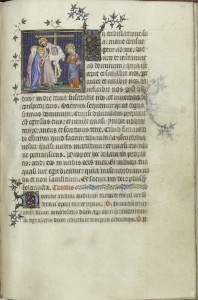Either of two yellow pigments containing lead and tin
Lead-tin yellow exists in two main forms: the so-called 'type I' – a lead stannate (Pb2SnO4) - and 'type II' – a lead tin oxide silicate (Pb(Sn,Si)O3). Lead-tin yellow type I has been identified in a large number of manuscripts and is probably the yellow pigment most frequently used in European easel painting between the 15th and the first half of the 18th century. Less common, lead-tin yellow type II derives from the ancient glass industry and is first seen in use by painters in 13th century Florence.
The two forms of lead-tin yellow cannot be easily distinguished with the analytical methods used for this project, with the exception of Raman spectroscopy. Therefore, in cases where Raman spectroscopy was not used to analyse a certain manuscript, the pigment is identified only as 'lead-tin yellow', with no further specification.







